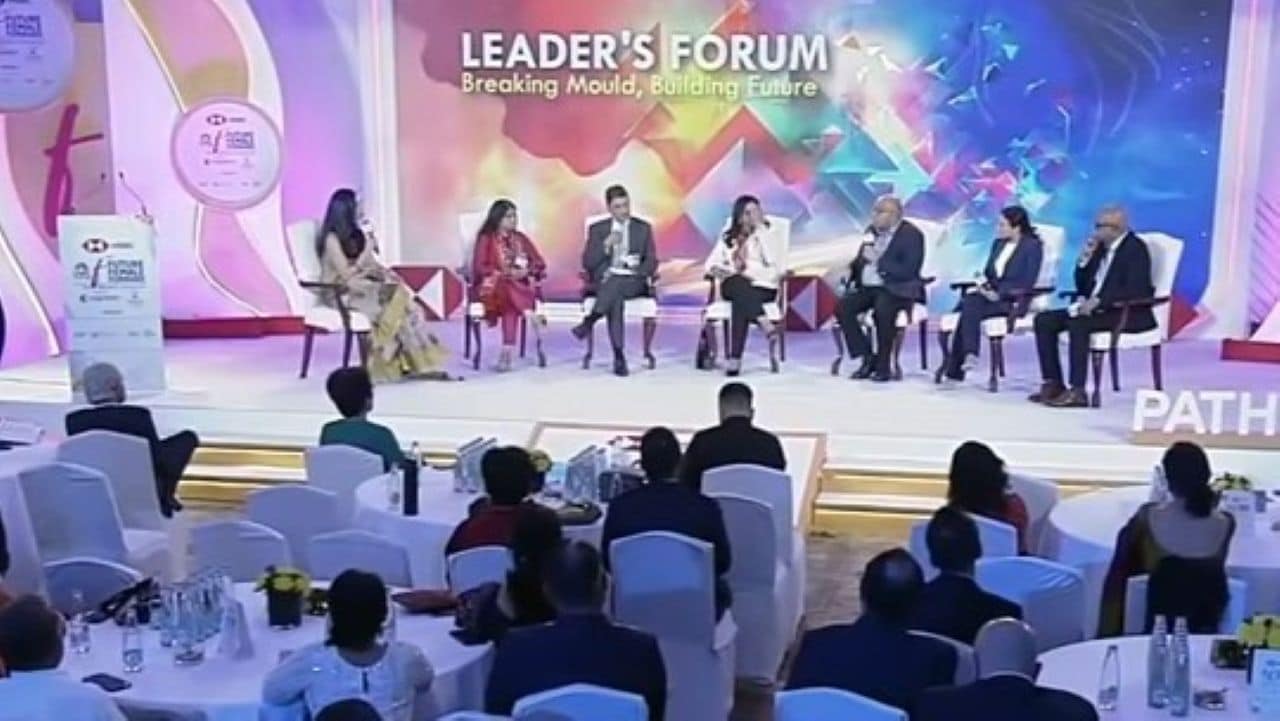Advertisement|Remove ads.
Future Female Forward | India must fix education, hiring gaps to boost women leadership, say industry heads

Speaking on the panel, Info Edge co-founder Sanjeev Bikhchandani flagged a shrinking gender ratio within India’s top talent pools, pointing out that the company’s women share has fallen to 40% from 50% a decade ago, driven by the expansion of tech and sales roles where women remain under-represented.
“Your best colleges must admit more women,” he said, adding that management and engineering institutes continue to skew heavily male, limiting the senior-leadership pipeline for the next two decades.
According to Ritu Arora, India country head at Allianz Investment Management, BFSI remains relatively more balanced when it comes to worker gender ratio.
However, Arora said that subject choices at the school level are narrowing the future talent pool, with one of her primary concerns being that very few girls opt for science stream during school. "The majority of the girls clearly choose to go for subject like humanities. I'm sure it's a personal choice, but then that is the pipeline that is already so thin, so obviously they're not making to these technical courses and are not ready for the kind of roles that are emerging now in India."
Manufacturing faces sharper deficits. Godrej & Boyce Executive Director Nyrika Holkar said women account for just 11% of the company’s workforce.
She cited cultural biases, limited flexibility and assumptions around shop-floor work as key barriers, though automation has enabled higher female participation in consumer appliances and locks divisions.
Banks report similar mid-career attrition. HSBC India Managing Director Ajay Sharma said the proportion of women dips sharply at senior levels despite near-balanced entry cohorts. Returnship programmes, data-driven hiring and targeted mentoring have helped, he said, but women entrepreneurs still receive far less credit than men.
Mona Khandar, Principal Secretary in the Gujarat government, said her experience as a woman in the bureaucracy has shown that structural change demands long-term planning, tighter coordination and constant negotiation across departments.
She cited Gujarat’s recent space-tech policy as an example of cross-departmental alignment, noting that the state moved first after identifying investors, skill gaps and “low-hanging fruits”, prompting rival states to follow.
Cognizant India CMD Rajesh Nambiar outlined a multi-layered programme focused on early-career navigation, managerial training, leadership development and returnships. The firm’s “Shakti” initiative has trained thousands of women and aims to reduce dropouts across career stages.













/filters:format(webp)https://news.stocktwits-cdn.com/large_best_buy_resized_jpg_b0e183ee15.webp)
/filters:format(webp)https://news.stocktwits-cdn.com/IMG_4530_jpeg_a09abb56e6.webp)
/filters:format(webp)https://news.stocktwits-cdn.com/large_Getty_Images_2211888161_jpg_044b7766a8.webp)
/filters:format(webp)https://st-everywhere-cms-prod.s3.us-east-1.amazonaws.com/unnamed_jpg_9dff551b50.webp)
/filters:format(webp)https://news.stocktwits-cdn.com/Getty_Images_1289252804_jpg_ff5891da72.webp)
/filters:format(webp)https://news.stocktwits-cdn.com/shivani_photo_jpg_dd6e01afa4.webp)
/filters:format(webp)https://news.stocktwits-cdn.com/large_tesla_fsd_jpg_e90331e6a6.webp)
/filters:format(webp)https://st-everywhere-cms-prod.s3.us-east-1.amazonaws.com/Rounak_Author_Image_7607005b05.png)
/filters:format(webp)https://images.cnbctv18.com/uploads/2025/10/2025-10-22t173545z-1846676795-rc24hhalb6xn-rtrmadp-3-google-ai-lawsuit-2025-10-e3ac8d1545d1349aca89b951b44592f3.jpg)
/filters:format(webp)https://st-everywhere-cms-prod.s3.us-east-1.amazonaws.com/cnbctv18logo.png)
/filters:format(webp)https://news.stocktwits-cdn.com/large_nutex_original_jpg_7eaece7f12.webp)